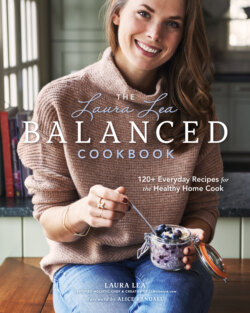Читать книгу The Laura Lea Balanced Cookbook - Laura Lea - Страница 38
На сайте Литреса книга снята с продажи.
Оглавление• Rolled oats: Oats—one of the inspirations of
this book! You will see oats throughout this
book in various applications, and that is for a
few reasons. Oats are affordable, available at
every grocery store, and they are extremely
versatile with their mild, barely sweet
flavor. Ground up, they can substitute 1:1 for
wheat flour; they make a great binder, are a
breakfast staple, and they can be used whole
in bars, granola, or dessert toppings. On
the health front, I much prefer homemade
oat flour to wheat, as it is gluten-free and
minimally processed. There are different
types of oats. All oat variations start at oat
groats, which are then processed to create
three main oat categories. Steel-cut oats
are simply groats that have been cut into
chunky pieces, and they take quite some
time to cook. Rolled oats are groats that have
been steamed and flattened, which makes
them more pliable and quicker-cooking.
Instant oats have been further processed
and flattened, and they lose texture/become
mushy when cooked. Feel free to experiment
with all three, but be sure to choose rolled
oats for the recipes in this book.
note: Make sure your oats have “Certified
GF/Gluten-Free” on the packaging if that
is a concern.
• Wild rice: Wild rice is actually the seed of
a long-grain aquatic grass. It has a nutty,
chewy flavor that pairs beautifully with nuts
and fresh or dried fruit. It has significantly
more fiber and protein than brown rice, as
well as B vitamins and a host of minerals.
Wild rice is gluten-free, making it a fun and
unique alternative for those who might be
sick of quinoa and oats.
what to do with
EXTRA WILD RICE
You can pop wild rice the same way
you pop popcorn.
Fiber-rich
grains can
be a great
addition to a
healthy diet.
In the recipes
that follow,
you’ll find wild
rice, quinoa,
rice, and
rolled oats.
